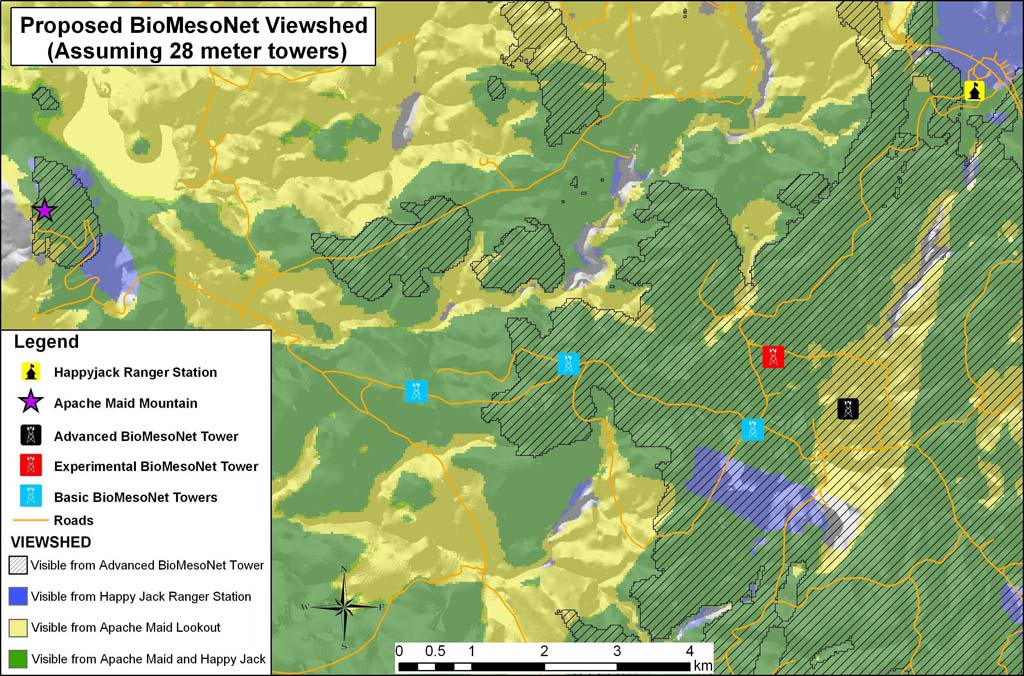Internet to the Happy Jack Ranger Station is currently available via T1 service, which is provided by Qwest and the local phone company. We are currently exploring the possibility of utilizing fiber optic cable. Data connectivity from Happy Jack to the field sites will likely utilize directional radio. Repeater towers may be necessary to get directional radio to the instrument towers. We have conducted a viewshed analysis of the area proposed for the BioMesoNet and administrative site (
Figure 2). Assuming 28 meter tower heights, our viewshed analysis indicates there is sufficient visibility between proposed site locations to create a highly functional data transmission network.
 |
Figure 2. This GIS-based viewshed analysis illustrates visibility from the Happy Jack Ranger Station,
Apache Maid Mountain Lookout, and the proposed Advanced
BioMesoNet tower site. |
Northern Arizona University currently has both 200 Mbits/sec and 1000Mbits/sec connections to the wider Internet. Standard Internet connectivity is provided through two redundant 200 Mbits/sec Internet connections. NAU has an Internet 2 connection of 1000 Mbits/sec available for use by data intensive projects such as a NEON core site. This connection is currently underutilized and would be available for NEON connectivity. Currently the yearly average utilization is approximately 9% in and 2.5% out of full capacity (peak 15%).
Data storage and management will utilize standard practices as developed by the Organization of Biological Field Stations (OBFS), Long Term Ecological Research Network (LTER), the Knowledge Network for Biocomplexity (KNB), Ecoinformatics.org and the National Center for Ecological Analysis and Synthesis (NCEAS). Data will be stored on centralized redundant servers housed in the NAU Information Technology Services (ITS) server facility. The ITS server facility provides 24-hour security, redundant UPS power and fire protection. Data will be backed up to the ITS automated tape library via the campus Intranet backbone on a regular schedule to be determined according to the rate of dataset change. The ITS tape library is housed in a different building from the server facility, providing the benefits of automated off-site back up for datasets. Datasets will be stored using standards-based and open source (where possible) methods in order to ensure long-term access to datasets. Datasets created in proprietary formats will be converted to non-proprietary formats for long-term storage and assured access. All datasets will be documented using standards-based metadata. A data librarian or manager will ensure that data documentation policies are followed by all users.
Metadata for all datasets will use the Federal Geographic Data Committee: Content Standard for Digital Geospatial Metadata (FGDC CSDGM) standard for all applicable datasets. We will convert to the ISO 19115 standard as soon as it is implemented. This conversion process (cross-walk) has already been developed by FGDC partner organizations. NAU can train users in proper data documentation and management; we already do this for tribal governments under a grant from FGDC. EML and/or Dublin Core metadata will be used for datasets which can not be properly documented using the FGDC standards.




